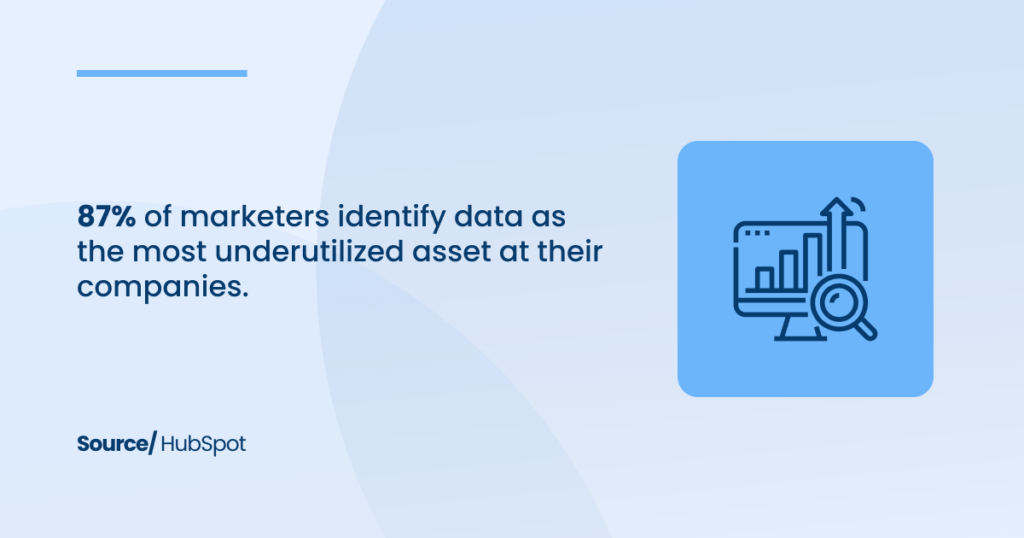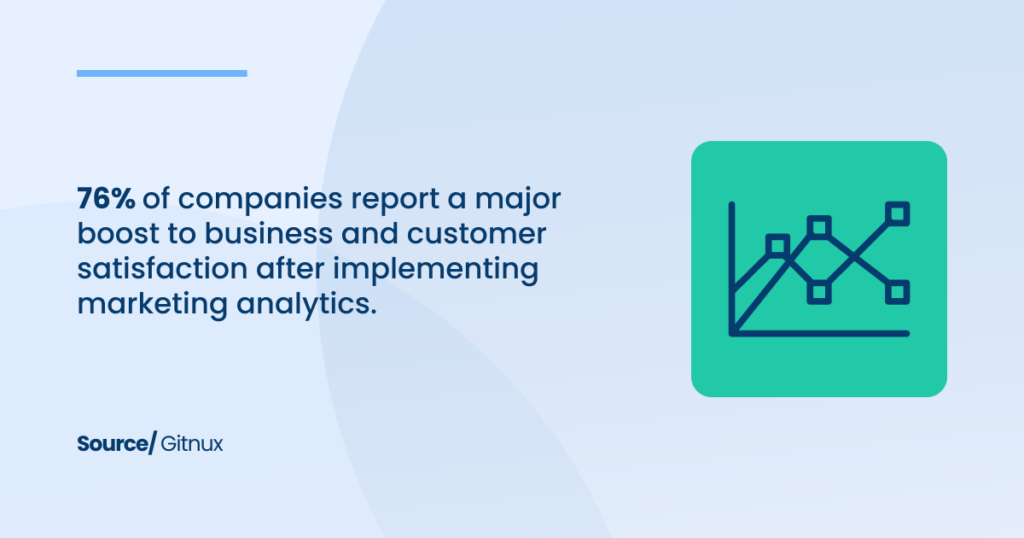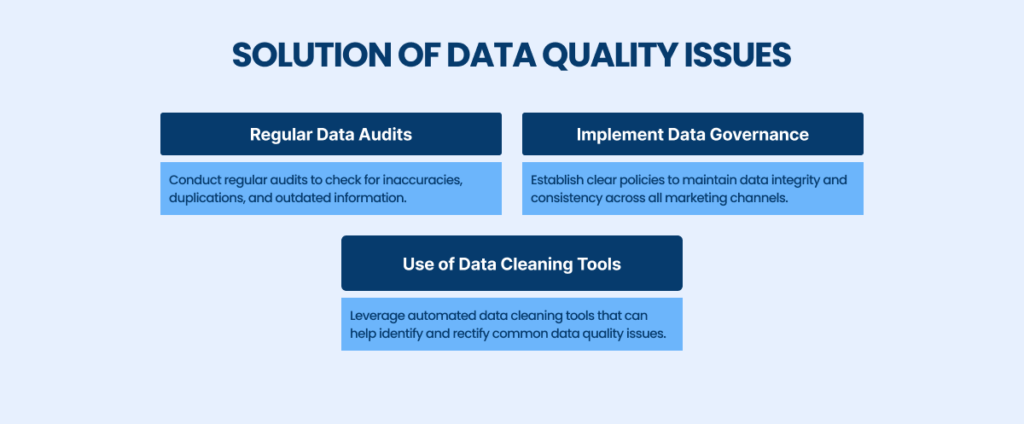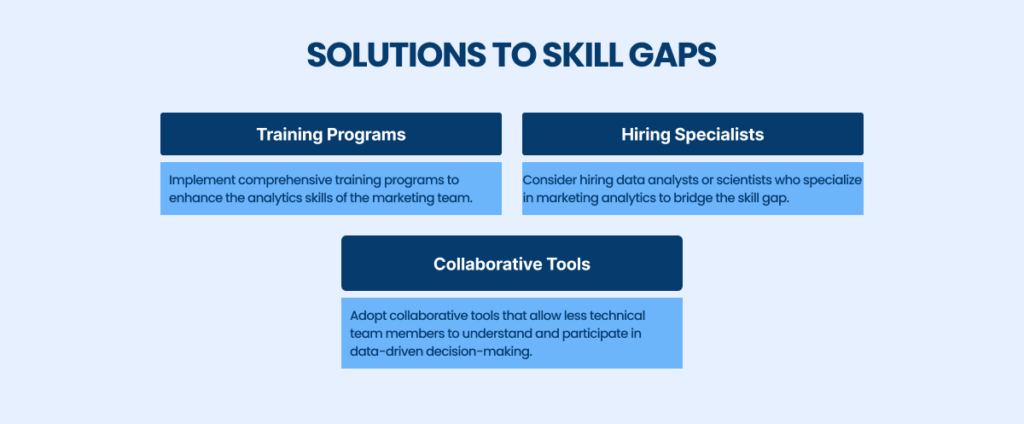In today’s data-driven world, simply creating content and hoping for the best is no longer enough.
“Data is the new oil. Like oil, data is valuable, but if unrefined, it cannot really be used”, noted mathematician Clive Humby.
This analogy underscores the importance of marketing analytics.
This allows businesses to refine their data to zoom in on customer behavior, identify emerging trends, and accurately assess the success of their marketing initiatives.
The process transforms raw data into actionable insights, enhancing decision-making and strategic planning.
The big data industry is projected to grow from USD 114.9 Billion in 2022 to USD 297.0 billion by 2030, exhibiting a compound annual growth rate (CAGR) of 14.5%.
Source: Market Research Future
Rising Internet penetration and enhanced government investments in upgrading digital technologies and expanding access are major drivers of market growth.
Accordingly, an expert Marketing Analytics & Reporting Agency can provide more comprehensive and accurate data analyses for potential clients and proven marketing strategies.
The blog post will cover what is marketing analytics and its various components, including data collection, analysis, and interpretation.
What is Marketing Analytics?
Marketing analytics encompasses the processes and technologies that enable marketers to evaluate the success of their marketing initiatives.
This is done by measuring performance (e.g., blogging versus social media versus channel communications) using important business metrics, such as ROI, marketing attribution, and overall marketing effectiveness.
In other words, what is marketing analytics? It’s the practice of managing and studying metrics data to determine the ROI of marketing efforts and to identify opportunities for improvement.

Marketing analytics utilizes various marketing analytics tools and techniques to collect data from different sources such as social media, emails, and websites.
This data is then analyzed to form actionable insights.
With the advancement in technology, these tools have become more sophisticated, providing more in-depth analysis and reporting capabilities, which can significantly boost a business’s ability to make data-driven decisions.
Importance of Marketing Analytics in Business
The importance of marketing analytics in business cannot be overstated. With the vast amounts of data generated every minute, it is crucial for businesses to leverage marketing analytics to stay competitive.
Marketing analytics influence 53% of companies’ marketing decisions.
By analyzing this data, companies can make informed decisions that not only help in optimizing their marketing strategies but also enhance customer engagement and increase profitability.
Key Components of Marketing Analytics
Marketing analytics is a multifaceted field that utilizes various tools, techniques, and processes to translate raw marketing data into actionable insights.
This section explores the fundamental components of marketing analytics, which are essential for any organization looking to enhance the effectiveness of its marketing efforts.
Data Collection
Data collection is a critical first step in the marketing analytics process. It involves gathering information from various sources to provide a comprehensive view of the market and consumer behavior.

The primary sources of marketing data include:
- Customer Interactions: This includes data from direct customer interactions such as sales transactions, customer inquiries, and service interactions, which provide insights into customer preferences and satisfaction levels.
- Digital Platforms: Data from websites, mobile apps, and social media platforms offer valuable insights into user behavior, engagement levels, and content effectiveness.
- Marketing Campaigns: Detailed data from marketing campaigns provide metrics on campaign performance, including reach, conversion rates, and overall engagement.
- External Sources: Publicly available data, market research, and competitor analysis contribute to a well-rounded data collection strategy, helping marketing teams understand the broader market context.
Effective data collection requires advanced marketing analytics tools and marketing analytics software that can handle large volumes of data from these diverse sources, ensuring data quality and accessibility for further analysis.
Data Analysis
Once data is collected, the next step is to analyze this information to extract meaningful patterns and trends.
Data analytics plays a crucial role here.
Techniques in Data Analysis
Several data analytics techniques are employed within marketing analytics to process and analyze data:
- Statistical Analysis: Basic techniques such as regression analysis, correlation, and variance analysis help in understanding relationships between different variables.
- Machine Learning: Advanced analytics techniques involving machine learning algorithms can predict customer behavior and outcomes of marketing campaigns.
- Segmentation: Dividing customers into groups based on similar characteristics or behaviors which allows for more targeted and effective marketing strategies.
- Sentiment Analysis: Utilized primarily in digital marketing analytics, this technique analyzes customer sentiments expressed in social media posts, reviews, and feedback.
- Data Visualization: Tools that facilitate data visualization help in making the data comprehensible at a glance, which is crucial for quick decision-making.
Utilizing robust marketing analytics software can automate many of these techniques, allowing marketing teams to focus more on strategy and less on data handling.
Data Interpretation
The ultimate goal of collecting and analyzing data is to interpret these findings to make informed marketing decisions.
Understanding Metrics and KPIs
Key Performance Indicators (KPIs) and metrics are essential for measuring the effectiveness of marketing activities.
Understanding and choosing the right metrics is critical:
- Conversion Rates: Measures the percentage of users who complete a desired action, which is crucial for evaluating the success of marketing campaigns.
- Customer Lifetime Value (CLV): Predicts the net profit attributed to the entire future relationship with a customer.
- Return on Investment (ROI): This metric helps in measuring the profitability of marketing campaigns, providing insight into the efficiency of spend versus gain.
- Traffic Sources: Understanding where site visitors come from can help refine SEO strategies and channel marketing efforts more effectively.
- Engagement Rates: Particularly important in social media and content marketing, this measures how actively involved with your content your audience is.
Interpreting these metrics through marketing analytics tools enables businesses to assess their marketing strategies’ impact on sales and customer engagement.
Marketing analytics not only helps evaluate past and current performance but also aids in predicting future trends, allowing marketing teams to adjust strategies proactively.
Types of Marketing Analytics
Marketing analytics provides insights into the vast amounts of data generated by marketing campaigns, helping organizations to optimize their strategies and achieve better outcomes.
Understanding the types of marketing analytics can equip marketing professionals with the tools they need to interpret and leverage data effectively.
Descriptive Analytics
Descriptive analytics is the most fundamental type of analytics, which compiles historical data and presents it in a way that is easy to understand.
This type often involves summarizing past events such as sales performance, website traffic, or campaign reach to provide a clear overview of what has happened.
Applications in Marketing:
- Email Marketing Analytics: By analyzing open rates, click-through rates, and conversion rates from past campaigns, marketers can gauge the effectiveness of different email marketing strategies.
- Content Marketing Analytics: Descriptive analytics helps in assessing which types of content (blogs, videos, infographics) perform best in terms of engagement and conversion.
- B2B Marketing Analytics: For B2B marketers, descriptive analytics can summarize lead generation and conversion rates over different periods, helping to identify trends in lead quality and quantity.
By providing a solid base of factual data, descriptive analytics helps organizations understand the baseline from which to measure change.
Diagnostic Analytics
Diagnostic analytics goes beyond descriptive data to explore the reasons behind past performance.
This type of analytics involves more in-depth data examination and analysis to understand why certain marketing outcomes occurred.
Applications in Marketing:
- Analyzing Marketing Data: Diagnostic tools can help determine why a particular marketing campaign succeeded or failed by looking at various influences like market conditions, competition, and audience reception.
- Digital Marketing Tools: These tools can be used to perform cohort analysis and customer segmentation to identify behaviors and characteristics that impacted campaign performance.
For marketing professionals, diagnostic analytics is crucial as it helps in pinpointing successes and failures, allowing them to replicate success and avoid past mistakes.
Predictive Analytics
Predictive analytics uses statistical models and forecasting techniques to understand the future and predict outcomes based on historical data. This type of analytics is increasingly popular due to its proactive approach to data.
Applications in Marketing:
- Predictive Analytics Marketing: Utilizing machine learning models to forecast customer behaviors, purchase patterns, and future engagement with products or campaigns.
- Customer Data: By applying predictive analytics to customer data, marketers can identify which leads are likely to convert, enhancing targeting strategies for future campaigns.
Predictive analytics provides marketing teams with a forward-looking perspective, enabling them to craft strategies that anticipate and meet future demands.
Prescriptive Analytics
Prescriptive analytics extends beyond predicting future outcomes by suggesting actions that can be taken to achieve desired results.
This type of analytics relies on advanced technologies like artificial intelligence and machine learning to provide decision options.
Applications in Marketing:
- Marketing Strategy: Prescriptive analytics can help in optimizing marketing strategies by simulating different scenarios and outcomes. For example, it can suggest the best times to post on social media or the most effective personalization strategies for content marketing.
- Digital Marketing Tools: Integration of prescriptive analytics in digital marketing tools can automate decisions in real-time campaigns, adjusting offers and ads according to user interaction and feedback.
Prescriptive analytics is particularly valuable in dynamic marketing environments where quick, data-driven decisions are crucial for maintaining competitive advantage.
Implementing Marketing Analytics
Implementing marketing analytics involves more than just gathering data; it’s about setting up a system that helps derive actionable insights that can be used to optimize and deliver marketing campaigns more effectively.
Whether it’s improving customer journey touchpoints, selecting the most effective marketing channels, or simply enhancing campaign strategies, marketing analytics plays a crucial role.
Setting Up a Marketing Analytics System
To effectively leverage the power of marketing analytics, businesses must establish a robust system tailored to their specific needs.
This involves multiple steps, from defining goals to integrating and maintaining the analytics system.
Choosing the Right Tools
Selecting the right tools is foundational to the successful implementation of a marketing analytics system. These tools not only collect data but also analyze and present it in a useful form.
- Compatibility with Existing Systems: The tools should seamlessly integrate with existing digital marketing platforms and CRM systems to ensure smooth data flow and consistency.
- Scalability: As business and data volume grow, the chosen tools must be able to handle increased demands without significant additional investments.
- User-Friendliness: Tools should be accessible to all users, regardless of their technical expertise, to enable various departments to make data-driven decisions.
- Advanced Analytical Capabilities: To derive deep insights, tools need to possess advanced analytical capabilities like predictive analytics and machine learning.
- Compliance and Security: Tools must comply with data protection regulations and ensure that customer and company data are securely handled.
Investing in the right tools not only simplifies the process of what is marketing analytics but also enhances the efficiency and effectiveness of marketing campaigns.
Common Challenges and Solutions
Implementing a marketing analytics system is not without its challenges. From data quality issues to skills gaps, various hurdles can impede the successful adoption and operation of marketing analytics.
Data Quality Issues
One of the most significant challenges in marketing analytics is ensuring data quality. Poor data quality can lead to inaccurate analyses and misleading insights, adversely affecting marketing decisions and strategies.

Focusing on data quality not only enhances the reliability of marketing analytics but also ensures that the insights derived are accurate and actionable.
Skill Gaps and Training Needs
Another challenge is the skill gap within organizations, where team members may not have the necessary knowledge to effectively use marketing analytics tools and interpret data.

Addressing these challenges can help organizations maximize the potential of their marketing analytics systems, leading to more informed decision-making and more effective marketing campaigns.
Through careful implementation, continuous monitoring, and ongoing training, businesses can navigate these challenges and harness the full power of marketing analytics to drive strategic decisions and optimize the customer journey.
Future Trends in Marketing Analytics
As the landscape of digital marketing continues to evolve, so too does the field of marketing analytics.
Staying ahead in this dynamic environment means understanding emerging trends and integrating new technologies that can enhance the effectiveness and precision of marketing strategies.
This section delves into the future trends in marketing analytics, focusing on how emerging technologies are poised to reshape this field.
Emerging Technologies and Their Impact
Emerging technologies are significantly impacting marketing analytics, revolutionizing how data is collected, analyzed, and applied.
Artificial Intelligence and Machine Learning
AI and machine learning are at the forefront of transforming marketing analytics by automating complex processes and making predictive capabilities more accurate.
These technologies can sift through massive datasets much faster and more efficiently than human analysts, identifying patterns and predicting trends that may not be immediately obvious.
For instance, AI algorithms can optimize real-time bidding strategies for digital ads by analyzing hundreds of variables simultaneously.
Augmented Analytics
Augmented analytics uses machine learning and AI to augment human intelligence and contextual awareness. This technology automates data preparation and enables data sharing across various platforms in an easily understandable format.
It also helps in generating insights from data analytics and reporting processes, making the analytics more accessible to non-technical marketing professionals, thus democratizing data-driven decision-making.
Voice and Conversational Analytics
As voice search and smart speakers continue to grow in popularity, voice analytics becomes increasingly important. This technology analyzes voice search data and customer service voice interactions to provide insights into customer preferences and behavior.
Marketing teams can use these insights to optimize content for voice search and improve customer engagement strategies.
Predictive and Prescriptive Analytics
While predictive analytics isn’t new, its applications within marketing continue to grow.
Predictive analytics forecasts future customer behaviors based on historical data, helping marketing teams to be proactive rather than reactive.
On the other hand, prescriptive analytics goes a step further by recommending actions based on predictive insights.
This can include anything from the best time to send email campaigns to personalized product recommendations for individual customers.
Partner with [A] Growth Agency for Your Marketing Analytics & Reporting Strategies
Marketing analytics is the cornerstone of modern business success.
By leveraging data, companies can make informed decisions that increase efficiency, enhance customer satisfaction, and drive revenue growth.
[A] Growth Agency will embrace your marketing analytics to navigate the challenges and seize the opportunities that lie ahead.
We specialize in turning entrepreneurial dreams into reality with practical, tailored growth strategies.
Excellence is our standard. We believe in the power of data to inform and drive every strategy, ensuring our actions are as effective as they are innovative.
If this is what you are in search of, go ahead!

